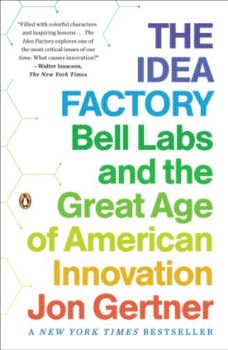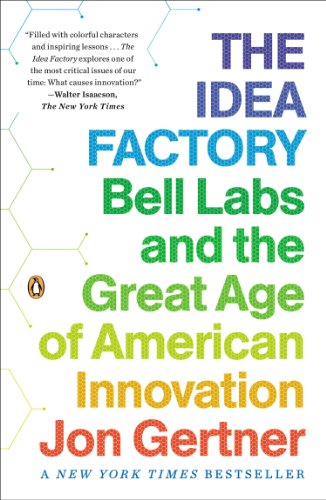
Ask yourself why the United States of America has remained the dominant economic and military power on the planet for nearly a century now. Is it the superior universal public education system we used to brag about? Is it the wealth of our natural resources: millions of acres of rich, arable land and bountiful mineral and petroleum wealth? The peculiar American ability to build and manage efficient large enterprises? The size and the demographic richness of our population, constantly renewed by the influx of resourceful people from other lands and cultures?
Jingoistic rhetoric aside, it’s most likely that your list of reasons — even, possibly, your only reason — is “American know-how,” the homegrown phrase that points to what seems an unusual national talent for creative thinking and innovation. In fact, it’s difficult to overlook the disproportionate presence of the United States on the lists of Nobel Prizewinners, industrial patents, and other markers of forward thinking in science and engineering throughout much of the 20th Century.
The Idea Factory: Bell Labs and the Great Age of American Innovation by Jon Gertner ★★★★★
In The Idea Factory, Jon Gertner examines one period and one place where the evidence of American know-how was most pronounced: the time from the end of World War II to the late 1970s in Murray Hill, New Jersey, where AT&T’s Bell Laboratories was headquartered. There, an extraordinary assemblage of brilliant scientists and engineers, guided by a succession of equally brilliant managers, invented or developed into practical form the fundamental advances in science and technology that have shaped the world we live in today:
- the transistor,
- the laser,
- quality assurance methods,
- communications satellites,
- mobile telephony,
- digital photography,
- fiber-optic communications,
- and a number of much less well-known but equally important technological advances as well as a long list of innovations in weaponry and spy technology that many of us would prefer not to know about.
In fact, the relationship of Bell Labs to the Pentagon, especially its National Security Agency, remained close throughout the period studied in this book.
It’s difficult to exaggerate the impact of the work at Murray Hill and its outlying sites following World War II. The transistor — the brainchild of three Bell scientists, John Bardeen, Walter Brattain, and William Shockley — is frequently cited as the single most important invention of the century. Certainly, the transistor lies at the heart of all things digital today. Even more fundamental to the world we inhabit is the information theory of Claude Shannon, who explained how computers might communicate with one another long before anything resembling today’s computers existed.
The biggest and most complicated machine in the world
As Gertner explains in great detail, most of Bell Labs’ work was carried out in service of the growing AT&T telephone network. (If you’re young enough to confuse that AT&T with today’s business of the same name, be advised that AT&T was America’s government-regulated telephone monopoly from the 1920s through the 1970s.) Those familiar with the network called it the biggest and most complex machine in the world. “The system’s problems and needs were so vast that it was hard to know where to begin explaining them,” Gertner writes.
“The system required that teams of chemists spend their entire lives trying to invent new, cheaper sheathing so that phone cables would not be permeated by rain and ice; the system required that other teams of chemists spend their lives working to improve the insulation that lay between the sheathing and the phone wires themselves. Engineers schooled in electronics, meanwhile, studied echoes, delays, distortion, feedback, and a host of other problems in the hope of inventing strategies, or new circuits, to somehow circumvent them.”
Gertner makes absolutely clear, however, that “this book does not focus on those tens of thousands of Bell Laboratories workers. Instead, it looks primarily at the lives of a select and representative few,” chiefly scientist-managers Mervin Kelly, Jim Fisk, and William Baker and scientists John Pierce and William Shockley. Every one of these individuals was exceptional, and Gertner does an excellent job giving us glimpses of their eccentricities and missteps as well as their extraordinary lives and character and their accomplishments.
I can fault this exhaustive study in only one way: it’s exhausting, expecially in its concluding chapters, where Gertner spends far too many pages dwelling on the eulogies offered up by the managers who ran Bell Labs when it was alive and well, before the break-up of the old AT&T that was consummated in 1983.
For further reading
This is one of the Best books about innovation reviewed here.
Like to read books about business? Check out My 10 favorite books about business history.
If you enjoy reading nonfiction in general, you might also enjoy:
- Science explained in 10 excellent popular books
- Great biographies I’ve reviewed: my 10 favorites
- Top 10 nonfiction books about politics
And you can always find my most popular reviews, and the most recent ones, plus a guide to this whole site, on the Home Page.


























